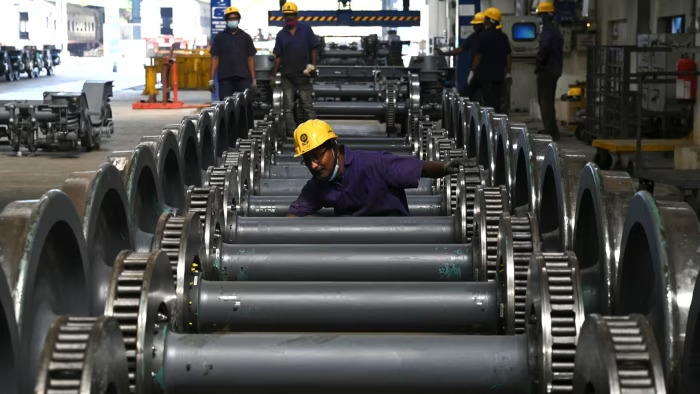

A comprehensive overview of professional background, expertise, and areas of specialization.
Asia Consultants is a renowned consulting firm in Civil Constructions
Q. What are the non-perennial and non-permanent jobs which can be assigned to
contract labour?
Ans. Neither the “perennial” nor the “permanent” term has defined under the Act. The word
Important Clarifications
On Contract Labour
“perennial” has been used under sec. 10(2)(b) where it is said that if the job exists for
sufficient duration will be considered as of “perennial” nature. The act no where prohibits
engagement of contract labour on any job or activity or service unless it is prohibited by the
Appropriate Govt. under the provisions of the Act. Andhra Pradesh State Govt. has amended
the CL Act in 2003 and clarified the jobs / activities on which contract labour can be deployed
but no other state has moved in this direction to bring clarity on this point. At present contract
labour can be engaged on any permanent nature of job in strict legal sense but yes, it
should be avoided as this may become a basis for the state Govt. to prohibit employment of
contract labour on that particular job / activity / service in the industry.
Q. Can we have permanent employees and contract labour working side by side on
the same job?
Ans. Yes! As explained above unless it is prohibited by the Govt.
Q. What is the best ratio between permanent and contact labour? Can we engage
100% contract labour?
Ans. There is no guide line provided under the Act about this ratio. The concept of
engagement of contract labour or giving job on contract basis originated to get the things
done in a given time frame to be paid on the basis of net result and not on the number of
manpower involved and this can always be applied to those areas of the industry where
activities are such that they do not require full time workers for the major portion of the
working hours or any sudden increase of volume of work which needs to be accomplished
in a specified time. So 100% contract labour can’t be engaged unless the whole industry is
leased out to someone else, who ultimately becomes the principal employer for the
manpower engaged by him. In my view ideal ratio of contract labour, to keep the healthy
industrial relations should be around 70/30 (70% to be engaged by principal employer and
30% through contract labour).
.
Comprehensive range of professional services and project capabilities
Professional background and career accomplishments
Q. Can we transfer casuals/temporaries on the rolls of contractor? Ans. As principal employer one should not do it. Transfer from the rolls of principal employer the rolls of contractor establishes that contract is sham and camouflage and the real control and supervision is of principal employer. Even if one wants to do this, better way would be to first clear full and final accounts, severe the relationship of principal employer and casual /temporary workmen by proper documentation. Then contractor can engage / employ such casual / temporary workmen on his rolls. In this whole process documentation is the key to establish whether the arrangements are genuine or fake. Q. Liability of principal employer for injury, illness, disability, death etc. Ans. Principal Employer is fully responsible in case of injury, illness, disability or death unless the contract labour is covered under ESI with his contractor employer. Q. Can and should the employer has a say in the number and selection of contract labour? Ans. No! Once the job / services / activities are allocated to a contractor under proper agreement, principal employer should not have a say in number and selection of contract workmen, at least on documents. If the principal employer is selecting the contract labour, appointing them under the name of contractor, it is sufficient to establish the relationship employer-employee between the principal employer and the so called contract labour. Q. Who is to take disciplinary action against contract labor? Under what rules? Are standing orders applicable to contract labour? Ans. Contractor as employer in relation to contract workman should take disciplinary action against such errant workman under the service rules of his organization / terms of employment. Standing Orders are not applicable to contract labour as the definition of the workman under Industrial Employment Standing Order Act does not cover contract labour unless your Standing Orders cover this category. Q. Is it necessary and desirable to issue employment card/gate pass/identity card to contract labour? If so under whose authority/signature? Safeguards? Ans. Yes! It is very much desirable. Issue of employment card / identity card is an obligation under the provisions of contract labour act and rules. Employment card / Gate pass / indentity card should be issued by and under the seal of contractor because he is their employer. Management of principal employer should not involve themselves in this activity.
Technologies and tools I work with
1221 Arcade
Mumbai, Maharashtra, India
A visual journey through our work
